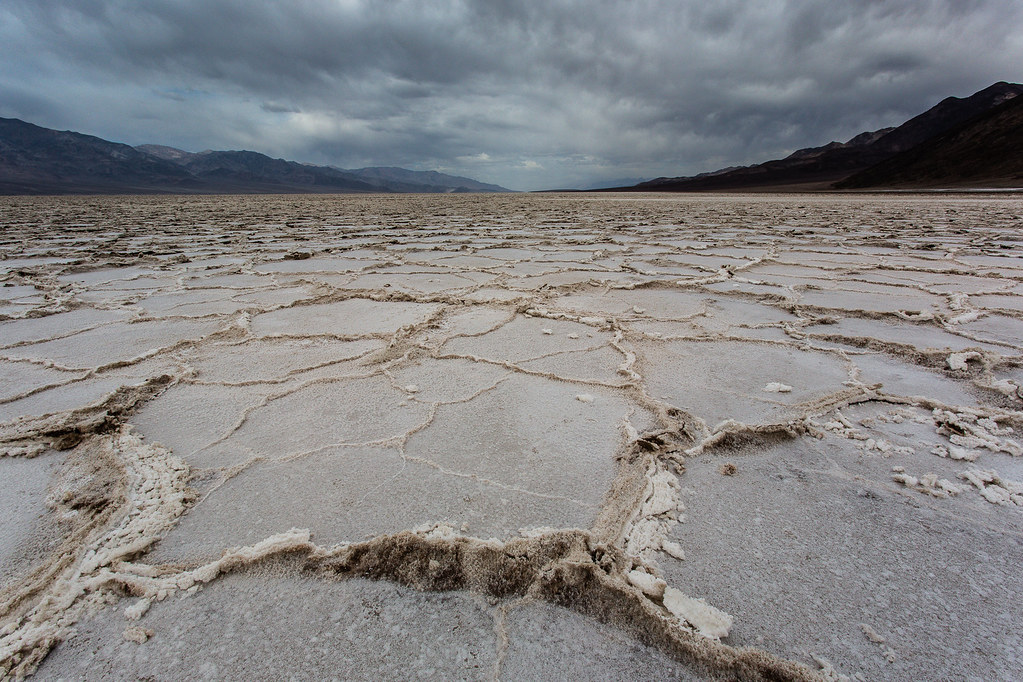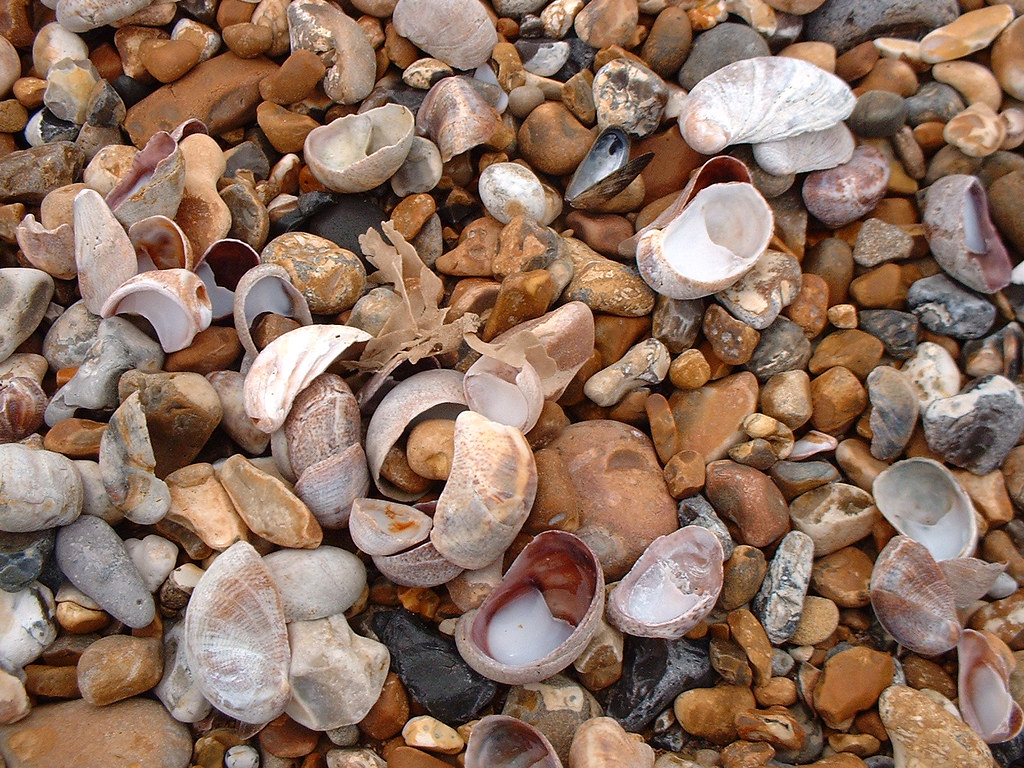5.4 Chemical and Organic Sedimentary Rocks
Chemical Sedimentary Rocks
Chemical Rocks
Chemical sedimentary rocks form when mineral crystals precipitate directly from a water solution. This water solution contains dissolved ions that become oversaturated (they are too built up in concentration to exist in just a liquid anymore) causing the excess ions to bond together and form solid mineral grains. Such ions include carbonate, silica, and salts such as sodium, chloride, and sulfate.

These rocks can form from inorganic processes only:
Rock Salt: An aggregate of halite crystals that form when saltwater evaporates. Remember that halite both has cubic cleavage and a cubic crystal shape.
Rock Gypsum: An aggregate of gypsum crystals that form when saltwater evaporates. Rock gypsum is soft and can be scratched by a fingernail. It also has perfect cleavage along one plane.
Biochemical Rocks
Biochemical, or organic, sedimentary rocks are rocks that are composed of the remains of once-living organisms. They can form from the hard shells of animals and microorganisms OR incorporate significant quantities of decaying organic matter into the structure.

Examples of rocks that only form from biochemical processes include:
Coal: Coal is composed primarily of carbon that is derived from plant material that was buried and underwent diagenesis.
Coquina: Coquina is a type of limestone that consists of a mass of shells that are poorly cemented together.
Chalk: This is a very soft, powdery white limestone that is composed of the shells of plankton.
Chemical and Biochemical Rocks
Sometimes, sedimentary rocks can form from EITHER inorganic or organic processes. Examples of these rocks include:
Chert: Composed of silica that formed as gels near the seafloor or silica from diatoms (microorganisms). Because it is made of the same material as quartz (SiO2), it has similar properties, including conchoidal fracture.
Limestone: There are many types of limestone (see above examples) that form from organic material, but other types are precipitated in the ocean from dissolved calcium and carbonate ions. You can always tell if something is made of limestone because like calcite, it fizzes when exposed to acid!
Let’s Review!
View the videos below, and assign each rock the appropriate name. You will also decide whether they are formed from inorganic or organic processes.

